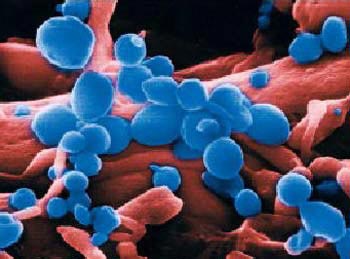The incidence of influenza A / H5N1 in 2010 increased abnormally
The number of cases of influenza A / H5N1 in the first months of 2010 can be said to be 'abnormal' compared to the previous years when only in the first 2 months of the year was equal to the total number of cases in 2009.

H5N1 virus has an alternative to grouping year by year
According to the research results of the Animal Health and Veterinary Institute, there is circulation of H5N1 virus in poultry flocks, especially in healthy flocks (mainly waterfowl). In addition, the trade of transporting poultry (including sick, sick, non-originating birds) between regions and borders is also the cause of increased prevalence of influenza in both humans and poultry.
Analysis by Associate Prof. Dr. Nguyen Tran Hien, Director of Institute of Hygiene and Epidemiology, shows that the strains of A / H5N1 influenza virus circulating in Vietnam are all highly virulent strains but the mortality rate is also Equivalent to regional countries.
By analyzing five deaths earlier this year, these cases were unrelated and most were hospitalized and treated for late Tamiflu.
So does the H5N1 virus have a virulence change, transmission that leads to the number of flu cases in the first 2 months of the year equal to 2009? Dr. Hien said: 'A / H5N1 influenza virus contains the genes of viruses from many animals, has fast mutation but so far, antigenic variation are small changes, there is no evidence that it change in virulence as well as the possibility of human-to-human transmission '.
In addition, the research results of human influenza A / H5N1 strains of the Institute of Hygiene and Epidemiology TU has shown a high similarity with viruses isolated from poultry at the same time.
According to a recent report from the World Health Organization (WHO), in the period from September 2009 - February 2010, H5N1 virus has had a small change in heredity and antigen but not to the extent must research and produce new vaccines.
In the coming time, the Institute of Hygiene and Epidemiology will continue to cooperate with the US Centers for Disease Control and Prevention to conduct studies such as influenza A / H5N1 to continue monitoring and monitoring the Variable virus timely.
Recommendation of the Ministry of Health:
- Implement good biosecurity measures in livestock by regularly using Chloramin B and strong disinfectants to disinfect and disinfect barns in every household and areas with bird flu.
- Absolutely not slaughtering and using suspected poultry. In particular, when a person with high fever is associated with sick poultry, they must go immediately to a health agency because the more they approach the late treatment, the higher the risk of pneumonia leading to death.
- Limiting the movement of poultry without quarantine between regions, seriously implementing vaccination for poultry .
- Vietnam successfully studied influenza A / H5N1 vaccine and influenza A / H1N1
- H5N1 avian influenza virus
- WHO announces the study of variant H5N1 avian influenza virus
- 4 ways to prevent influenza A
- Appeared new outbreak of H5N1 bird flu in Quang Ninh province
- Vietnam produces vaccines to prevent new strains of influenza A / H5N1
- H5N1 flu appears in poultry in Ninh Thuan
- Pandemic H5N1 has returned
- The 9th death due to H5N1 infection in Cambodia
- The first case of death from H5N1 flu in 2014
- IAEA uses nuclear technology against H5N1 virus
- Prevention of bird flu spreads to humans
 March 2012: Launching H5N1 vaccine for poultry
March 2012: Launching H5N1 vaccine for poultry Experts comment on the mysterious gradual disappearance of the Delta variant in Japan
Experts comment on the mysterious gradual disappearance of the Delta variant in Japan Danger of the two Delta . branch variants
Danger of the two Delta . branch variants 2020 pandemic flu attack humans?
2020 pandemic flu attack humans? New discovery about the host that transmits H5N1 influenza virus to humans
New discovery about the host that transmits H5N1 influenza virus to humans  Frequently asked questions about bird flu transmitted to humans
Frequently asked questions about bird flu transmitted to humans  Bird flu and things you need to know
Bird flu and things you need to know  Japan discovered dangerous strain of bird flu
Japan discovered dangerous strain of bird flu  H5N6 virus is spread from poultry to humans
H5N6 virus is spread from poultry to humans  Breeding biosafety chicken
Breeding biosafety chicken 